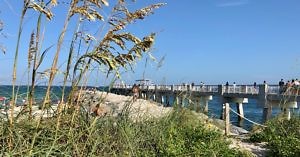On the interaction between transcription factors and the immune system
We’re continuing our mini-series on the MYC oncogene and associated super-enhancers and transcription factors, with a look at some of the molecular mechanisms driving epigenetic accessibility and how they interact with the immune system. It turns out that the two appear to be inextricably linked.

Dr Jay Bradner (NIBR)
It’s an exciting and emerging area in oncology R&D as companies and researchers begin to leverage basic science with a convergence between scientific fields to drive new opportunities for therapeutic intervention in cancer.
Included in this post are excerpts from an interview with Dr Jay Bradner from the Novartis Institutes of Biomedical Research. He’s most well known for his academic research on chromatin and bromodomain fields. As Dr Bradner told me during our discussion:
“MYC has so many target genes that I would imagine one might find any number of immune factors as augmented in their expression by MYC.”
As always, we covered a lot of ground and dived into more detail. There’s also been a number of recent research papers published since our discussion that have shed more light on the topic.
This is the second post in our latest mini-series. If you’d liked to read this and our coverage from the forthcoming ESMO, SITC and ASH annual meetings, do sign up to keep up to date…
To learn more from our latest expert interview and get a heads up on our oncology insights, subscribers can log-in or you can click to gain access to BSB Premium Content.
This content is restricted to subscribers



 It’s the dog days of summer and yet there’s a lot happening on the DDR front from multiple angles.
It’s the dog days of summer and yet there’s a lot happening on the DDR front from multiple angles.

 With the Jounce-Celgene announcement that the ICOS agonist, JTX–2011, is being returned and new priorities being pursued there is much to consider. There are quite a few nuances to this story to consider beyond the obvious that BMS already have an ICOS stimulating molecule.
With the Jounce-Celgene announcement that the ICOS agonist, JTX–2011, is being returned and new priorities being pursued there is much to consider. There are quite a few nuances to this story to consider beyond the obvious that BMS already have an ICOS stimulating molecule.
 As we prepare for rolling out some additional expert interviews on a variety of topics together with another mini-series on a tricky target, I wanted to take a moment to explore the Neon Therapeutics data.
As we prepare for rolling out some additional expert interviews on a variety of topics together with another mini-series on a tricky target, I wanted to take a moment to explore the Neon Therapeutics data.